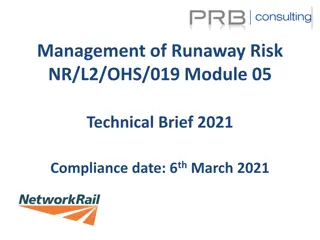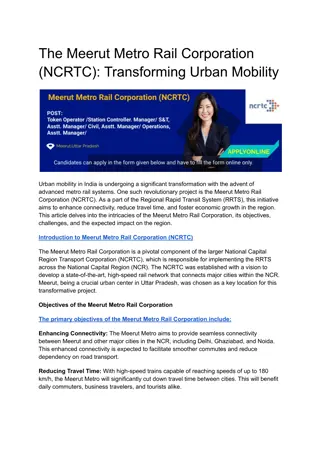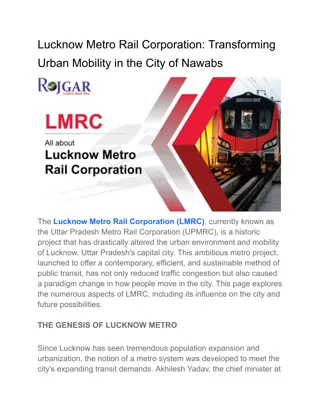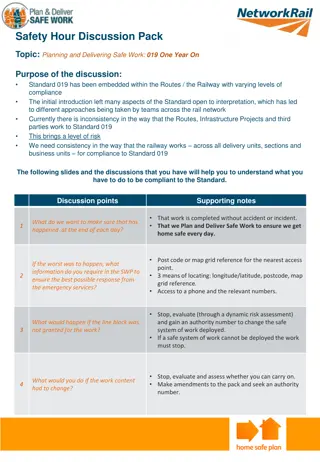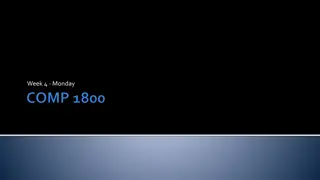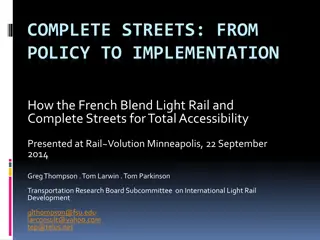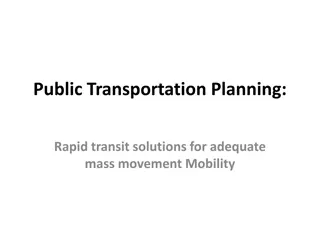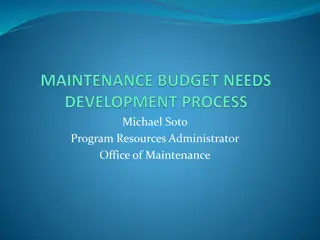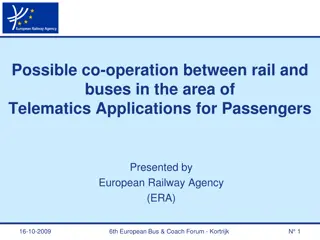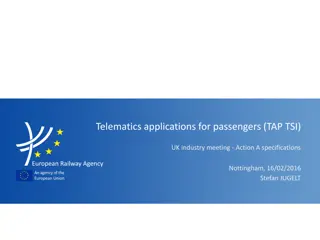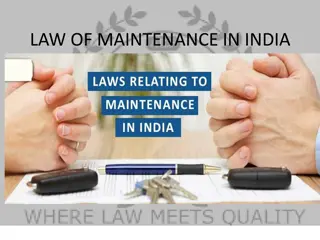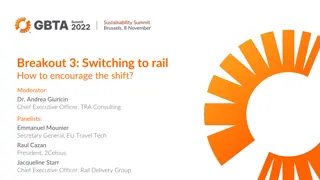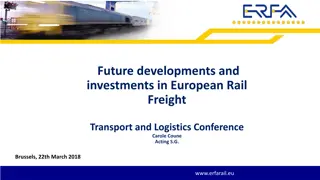Toyota Rail Strategy: Operations Guide for Vehicle Maintenance
This guide provides instructions for jump-starting vehicles with dead batteries, charging batteries, and refueling. It emphasizes using the correct procedures and equipment to avoid damage to Toyota vehicles. Follow these guidelines for safe and proper maintenance at any destination holding Toyota products.
Download Presentation

Please find below an Image/Link to download the presentation.
The content on the website is provided AS IS for your information and personal use only. It may not be sold, licensed, or shared on other websites without obtaining consent from the author.If you encounter any issues during the download, it is possible that the publisher has removed the file from their server.
You are allowed to download the files provided on this website for personal or commercial use, subject to the condition that they are used lawfully. All files are the property of their respective owners.
The content on the website is provided AS IS for your information and personal use only. It may not be sold, licensed, or shared on other websites without obtaining consent from the author.
E N D
Presentation Transcript
Rail Strategy Rail Strategy Rail Strategy Toyota No Starts Rail Strategy Rail Strategy & Operations & Operations & Operations & Operations & Operations This will serve as the guide to This will serve as the guide to use at any destination that holds use at any destination that holds all Toyota product for no starts. all Toyota product for no starts. Please follow our guidelines at Please follow our guidelines at all times. all times.
Rail Strategy Rail Strategy Rail Strategy Toyota No Starts Rail Strategy Rail Strategy & Operations & Operations & Operations & Operations & Operations Jump Starting Vehicles Jump Starting Vehicles To jump-start a vehicle with a dead battery, use either a portable battery charger or jumper cables and a yard utility vehicle (never another new Toyota, Scion, or Lexus vehicle). Ensure vehicle(s) is(are) off and connect cables as follows: Portable battery charger: Connect positive cable to positive battery terminal. Connect negative cable to negative battery terminal. Utility vehicle: Connect one end of first cable to positive terminal of dead battery. Connect other end of first cable to positive terminal of good battery. Connect one end of second cable to negative terminal of good battery. Connect other end of second cable to engine block of vehicle with dead battery (an unpainted metal bolt or bracket). Start the utility vehicle (unless using portable battery charger). Start the vehicle with the dead battery. Remove the cable connections in the reverse order that they were attached. Ensure the ends of the cables do not touch each other or other metal parts.
Rail Strategy Rail Strategy Rail Strategy Toyota No Starts Rail Strategy Rail Strategy & Operations & Operations & Operations & Operations & Operations Charging Batteries Charging Batteries Batteries should be recharged using an appropriate charging device, such as a portable battery charger (which plugs into a standard electrical wall outlet) or a permanent charging station. If battery is still installed in vehicle, ensure vehicle's negative battery cable is disconnected. Ensure power switch on battery charger is off when connecting or disconnecting cables. Connect positive cable to positive battery terminal and negative cable to negative battery terminal. Batteries should be charged overnight to ensure full charging has occurred. If battery fails to charge, have battery and/or vehicle electrical system checked by a qualified technician.
Rail Strategy Rail Strategy Rail Strategy Toyota No Starts Rail Strategy Rail Strategy & Operations & Operations & Operations & Operations & Operations Refueling Refueling If vehicle has run out of fuel the car should be refueled using the proper grade that will be listed in the gas cap cover. Exercise caution when entering railcar so that fuel container does not come in contact with the vehicle. When putting fuel in the car ensure that fuel does not contact painted surface. Once car has been fueled remove the fuel container from the inside of the railcar and proceed to drive vehicle off the railcar to the fuel pumps to replace missing fuel. No more than 3 gallons of fuel should be placed in the car. Unload contractor should keep track of how much fuel was added to specific vins.
Rail Strategy Rail Strategy Rail Strategy Toyota No Starts Rail Strategy Rail Strategy & Operations & Operations & Operations & Operations & Operations Missing Keys Missing Keys In the event that keys are not present inside the vehicle, the car may be pushed, if it can be done safely, or towed off of the railcar. The Toyota preference is to have new keys cut and then have the car driven off normally. In order to facilitate fluidity at rail yards Toyota understands that waiting for keys may not be suitable to operations. If the car is being pushed off the railcar, car should only be pushed to the door and then towed the remainder to ensure that unloaders are not injured on the ramps. If the car is being towed, override the shifter to place the car in neutral and release the parking brake. If the shift override is damaged in the process, liability will be placed on the unload contractor. Once the car is off the railcar and on the ground, stage in an area with other no starts to be evaluated by our inspection company, Vascor. Vascor will be the coordinator for all Toyota product at all rail destinations.




